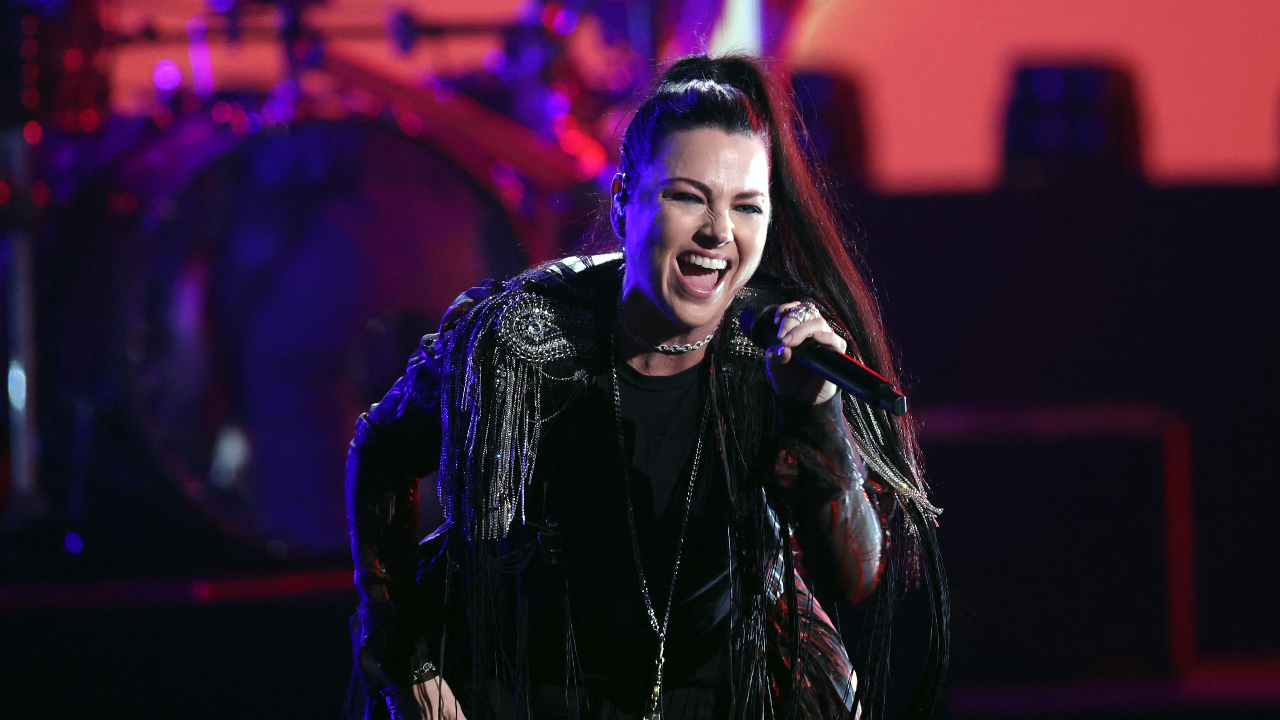Loudest headphones 2025: You want volume and lots of it? You got it
Here's my pick of wired, Bluetooth, audiophile and noise cancelling headphones that are designed to rock your world at max volume

Who doesn’t like to listen to their music loud? Not you, I’d be so bold as to assume – and certainly not me, either. There’s something undeniably visceral about listening loud, whether you’re fixing to drown in swampy maelstroms of dirtful guitars or diving headfirst into the quiet-quiet-loud dynamic drop of your favourite post-rock supergroup. It’s addictive.
This three-dimensional, physically-felt experience is easiest found by the subs at your local rock venue, a close second being ‘wherever your head is when you’re sneaking the volume up on your hi-fi system’. But sometimes you need to take that cathartic experience out and about – or, at the very least, into a format where you’re not annoying your loved ones, neighbours or local wildlife. You need headphones. You need loud headphones. You need the loudest headphones. But what are the loudest headphones?
This isn’t an easy question to answer. And the shortlist of excellent headphones I’ve put together below is by no means the last word on this subject, either. Instead, see this round-up as a list of luminary headphones from across the budget spectrum, all of which satisfy that primal urge for “loud, NOW” on some meaningful level.
There are studio-quality monitors with headroom for days, budget headphones with hefty sound profiles, and Bluetooth-friendly wireless behemoths for you to consider, each of which bring gratifying loudness to your day-to-day.
If you’re ready to hear out the best in the biz, read on – but if you want a little more context on what exactly we mean by loudness, and what makes the loudest headphones truly loud, hop on over to our buyer’s advice section for a deeper dive.
Quick list
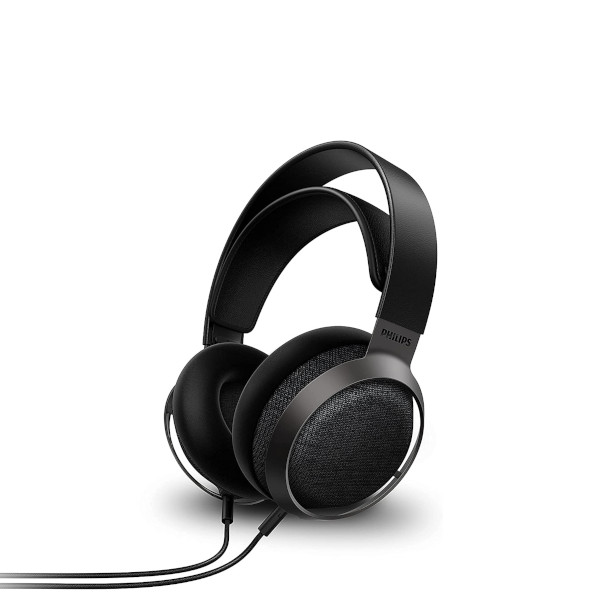
The Philips Fidelio X3 are my top pick in this list of the loudest headphones due to their huge soundstage and no-frills design. They're wired, so no need for Bluetooth integration, and are ideal for indoor use. I found them comfortable to wear during long listening sessions and they retain their audio clarity even when cranked up to 11.
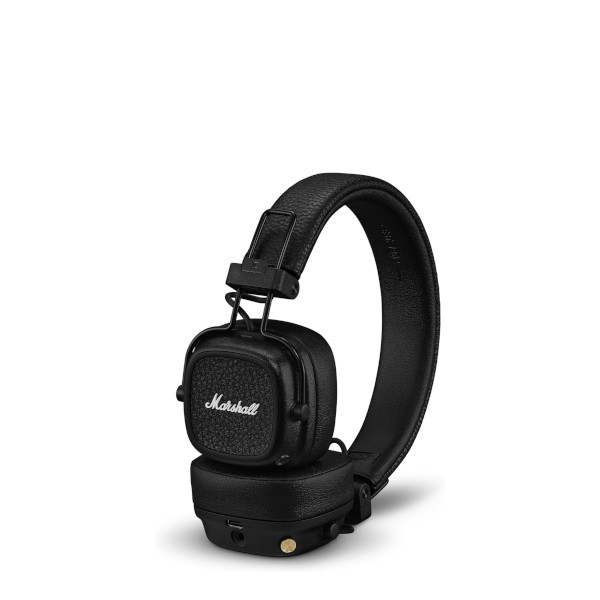
I love Marshall's design covering both their speakers and headphones - and the Major V headphones hit the sweet spot for rock fans. Guitars sound fantastic and bass is punchy without being over the top thanks to the Major V's 40mm dynamic drivers. Battery life is simply awesome too with an earth-shaking 100-hours of music playback. Highly recommended.
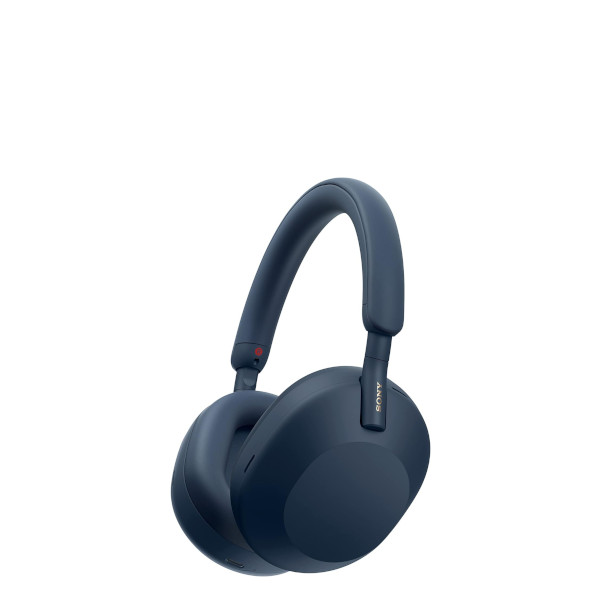
As much as I love the old 1000XM4, it's hard to argue against the all-round audio performance and exceptional active noise cancellation on the Sony WH-1000XM5. They are a fabulous set of headphones with up to 40 hours of battery life and while the don't fold down like the older model, they're comfy for long listening stretches.
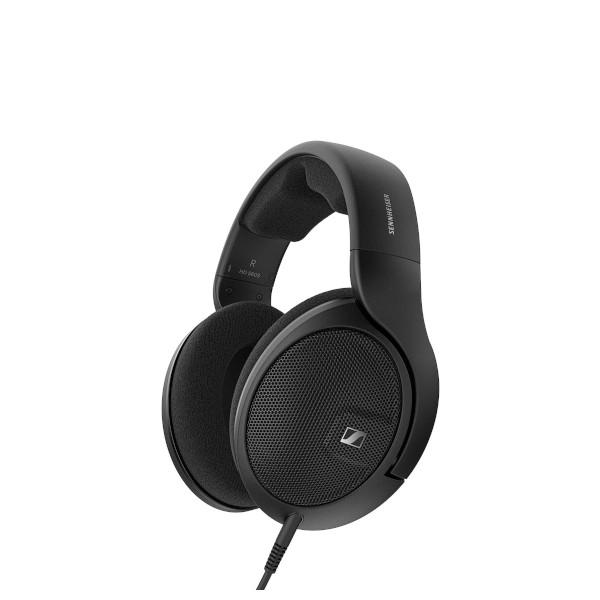
The Sennheiser HD 560S are a great choice if you're after audiophile quality sounds - and they won't break the bank. They're wired headphones so don't feature Bluetooth or noise cancelling, but they more than make up for this with their overall quality. They're lightweight so good for longer sessions, but these over-ears are open-backed so audio will leak.
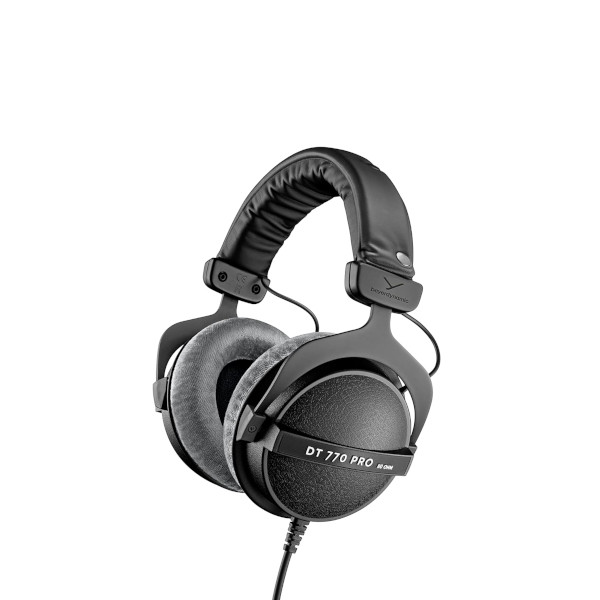
Beyerdynamic are vaunted for their studio monitor headphone designs – and as someone who’s spent a fair whack of time in studios, I know exactly why. The DT 770 PROs are just as comfortable pumping sweet noise into your ears on the go as they are providing no-frills context to works-in-progress; the 80-ohm variants balance low impedance with great fidelity, and gives a nice, welcome platform to low end while they’re at it.
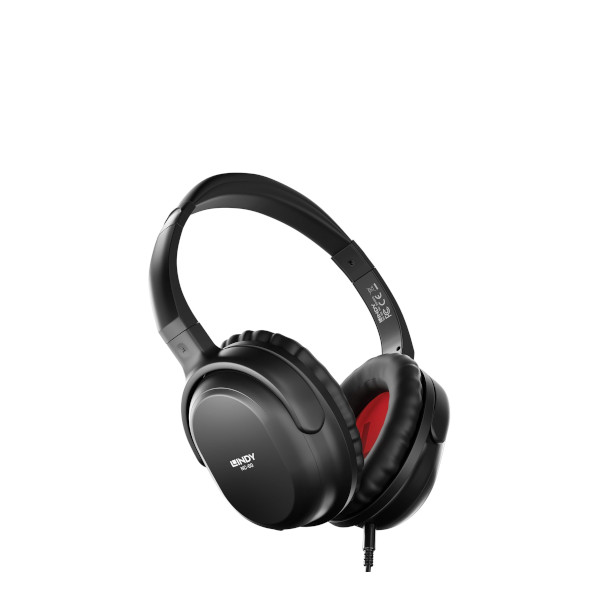
The Lindy NC-60 headphones offer noise cancelling on a budget - although there's no Bluetooth so you'll have to have an audio device with a 3.5mm audio jack. So they may lack the bells and whistles of other headphones in the list, but the Lindy NC-60 offer great value for money. Audio quality is above average thanks to their 40mm drivers and are a good all-'round fit.
The Louder choice

Specifications
Reasons to buy
Reasons to avoid
✅ Buy if you want a pair of all-round performers: The Philips Fidelio X3 sound excellent and deliver crystal clear audio thanks to their 50mm drivers.
❌ Avoid if you want wireless headphones: There's no Bluetooth here as the X3 are wired only.
Audio rating: ★★★★★
Comfort rating: ★★★★½
Battery rating: N/A
Overall: ★★★★★
Philips rebooted its Fidelio brand with these flagship X3 Hi-Fi reference cans, and I was blown away. The X3 could never be described as casual. They are neither wireless nor Bluetooth enabled. They’re unapologetic indoor head-fi, complete with Kvadrat Fabric backed earcups, disguising the fact that they are open backed over-ear design.
They have soft velour ear pads and a headband that is lightly sprung for a really secure fit. Actually, they look a lot like the brand’s 2015 vintage X2s, but closer inspection reveals key differences. Swapping the outside of the enclosure from a metal mesh to Kvadrat cloth has required a complete redesign of the earcups and the internal components.
Inside, a 50mm driver adopts a three-layer design with a damping gel sandwiched between polymer layers. Philips says this combats resonance. The technique works really well. You can take these headphones to extreme volume, and they never lose control.
That open-back design creates a huge soundstage. Listen to AC/DC’s Thunderstuck and you can visualise Brian Johnson’s grizzled performance. There’s a clarity of purpose here that’s simply jaw-dropping.
The headphones offer a lush low end, that’s tight and rewarding, while the midrange glistens with detail. They articulate brilliantly. The vocal histrionics of Tom Petty on Refugee are surgically presented, his energetic slurring a joy, while Satellite Of Love reveals snippets of contrasting ambiance on Lou Reed’s mesmeric vocal.
The X3 are astonishingly immersive, and come highly recommended.

"The Philips Fidelio X3 are simply a brilliant set of headphones. They’re not wireless or Bluetooth enabled, so indoor use is really where the X3 shine. Comfy and secure, the audio performance is top drawer no matter what volume you’re cranking out."
Read more: Philips Fidelio X3 review
Best battery

Specifications
Reasons to buy
Reasons to avoid
✅ Buy if you want massive battery life: Combining Marshall's awesome audio with a battery life of 100 hours, you can't go wrong with these headphones.
❌ Avoid if you want noise cancelling: The battery life probably tells you that these on-ear Marshall's don't have ANC. Look elsewhere if that's what you need.
Audio rating: ★★★★★
Comfort rating: ★★★★½
Battery rating: ★★★★★
Overall: ★★★★★
There’s no arguing with the street cred of Marshall's headphones. The Major V are the most recent in their range and a step up from the much-loved Major IV. The main difference between the two models is an increase on the Major IV's already impressive 80-hour of battery life, with the newer headphones boasting a phenomenal 100-hours of music playback from a full charge.
Bluetooth has also been improved from 5.0 to LE Audio enabled which means audio sync will be improved while watching videos on your tablet or phone and you'll get a wider streaming range.
Like the Major IV, the Marshall Major V also fold down and a quick-charge of just 15 minutes will give you up to 15 hours of wire-free listening.
The Major V employ 40mm dynamic drivers, able to rumble like Sabaton on manoeuvres. I stupidly edged the tolling bells intro The Last Stand to max, only to spill my coffee when the band suddenly opened fire.
The drivers have been custom-tuned to deliver Marshall’s signature sound, which favours a smooth guitar-friendly midrange and gutty bass attack. Audio performance doesn’t fray under pressure. Tony Iommi’s portentous picking on Black Sabbath’s Electric Funeral is a rich swagger, and they keep pace when things speed up.
Eric Bloom’s vocals on Blue Oyster Cult's Flaming Telepaths confirmed they’re a little sharp at volume, but the cascading keyboards and soaring guitar sound so good we never felt tempted to ease back the volume.
While most will opt to use these headphones wireless, there is the option of a 3.5mm cord when the battery dies, or if you want to use them with your Nintendo Switch. In fact, the only fly in the ointment is a lack of ANC, but I can certainly live with this given the awesome all-round performance.

"Be in no doubt: Marshall’s Major V headphones rock. They’re not perfect - the lack of noise cancelling will rule them out for many, and the design won’t suit everyone. But when it comes to blending style and performance, they deliver well above their price point. They slam like bodies in a circle pit, have engaging musicality and boast a battery life few rivals can match."
Read more: Marshall Major V review
Best noise cancelling
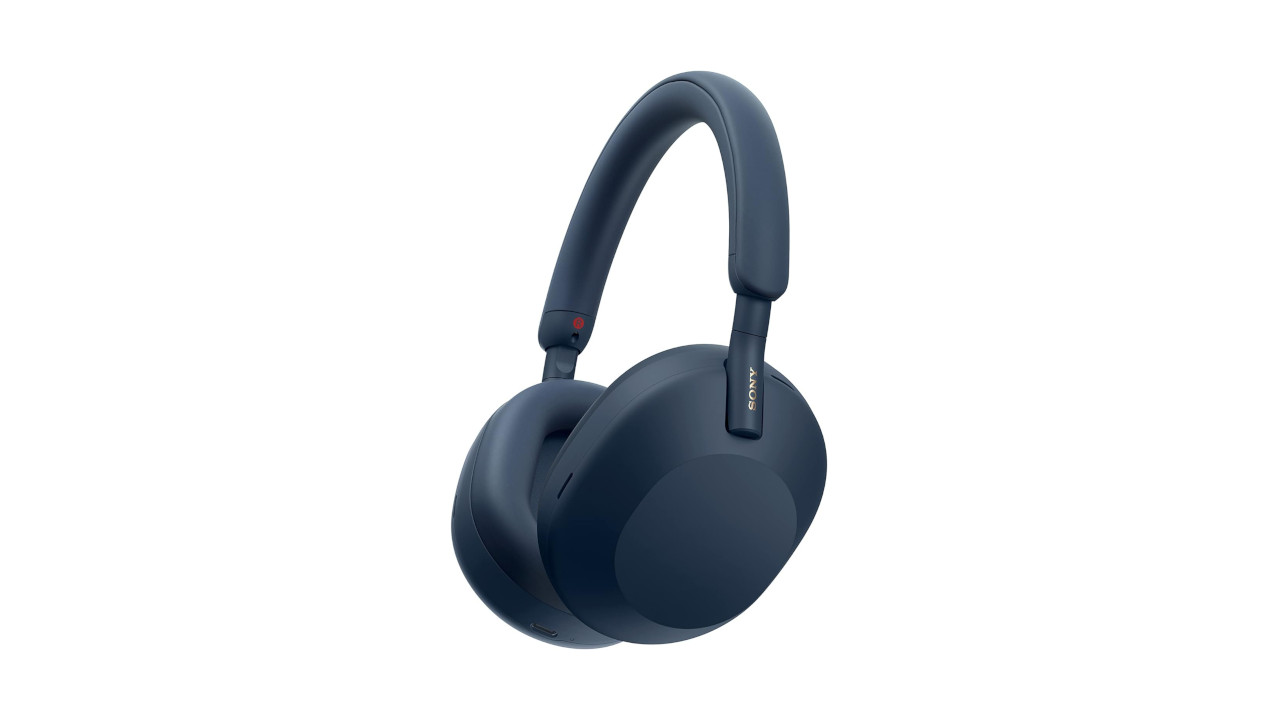
Specifications
Reasons to buy
Reasons to avoid
✅ Buy if you want the best ANC: After using my pair for a couple of years, I'm still blown away by the amazing noise cancelling on the XM5. They also sound amazing.
❌ Avoid if you travel a lot: Unlike some other Sony headphones, the XM5s don't fold away - and the carry case is pretty big.
Audio rating: ★★★★★
Comfort rating: ★★★★★
Battery rating: ★★★★½
Overall: ★★★★★
My personal favourite noise cancelling over-ear headphones are the Sony WH-1000XM5 - and after owning a pair for a couple of years, I can tell you that they don't disappoint when it comes to high octane audio delivery either.
They’re awash with smart AI features, including DSEE Extreme which goes a long way to making non high-res audio palatable at louder volume and when it comes to the audio performance of the Sony WH-1000XM5, it's easy to see why the audio giant refers to them as offering "superlative” sound. The soundstage is wide and really well balanced - and perfect for my tastes which means they're not bass-heavy at all.
The timing is on point, too, and no matter how much the tempo of my music chopped and changed, the Sony WH-1000XM5 remained as calm and collected as a Las Vegas croupier.
Battery life is great at 30 hours with ANC activated (you'll get 40 hours with this feature switched off) and a swift 3-minute charge will give you a brilliant 3 hours of music which is ideal if you're in a rush to get out of the door.
Sure, they don't fold away like the Sony WH-1000XM4 and the carry case is pretty big - two factors that aren't ideal if you're travelling a lot, but I've not had any problems with long-listening comfort with the XM5 (they're also 250g compared to the older model's 254g) and I regularly wear them for long stretches without any issues.

Offering supreme sound quality, a terrific set of features and a decent battery life, Sony’s stylish over-ear headphones are the best set of headphones you can buy at this price."
Read more: Sony WH-1000XM5 review
Best wired option

4. Sennheiser HD 560S
Our expert review:
Specifications
Reasons to buy
Reasons to avoid
✅ Buy if you want a quality pair of wired cans: Sennheiser's headphones deliver superb audio and the HD 560S are no different. Blistering audio coupled with affordability.
❌ Avoid if you're after closed-back headphones: The Sennheiser HD 560 headphones have an open-back design, so sound will leak out when you're rocking out.
Audio rating: ★★★★
Comfort rating: ★★★★
Battery rating: N/A
Overall: ★★★★
Audiophile grade headphones typically come with a wince-inducing price tag, but these serious sounding headphones from Sennheiser won’t break the bank. They definitely sound more expensive than they are.
Wired only, the HD 560S ship with a generous 3m cable, terminated for use with dedicated headphone amplifiers and full-blown amplifiers, and because they’re wired, that means no on-cup controls, Bluetooth or noise cancelling.
Their low cost is largely attributable to the plastic build. The benefit is that the chassis is really light, but they don’t feel particularly premium. I found the lightweight headband and velour cushioned ear pads comfortable, although they did clamp with some force. The design is over-ear and open-backed, so soundwaves from each cup permeate out, creating a larger, more naturalistic listening experience.
Tonally they’re analytical, even dry. But surprisingly if you want to dissect Eddie Van Halen’s virtuoso guitar work, they’re ideal and at volume, they create a wide, exciting sound stage.
The over-ear cups may be generous, but the drivers are a mere 38mm. Size isn’t everything, it seems.
Best for studios
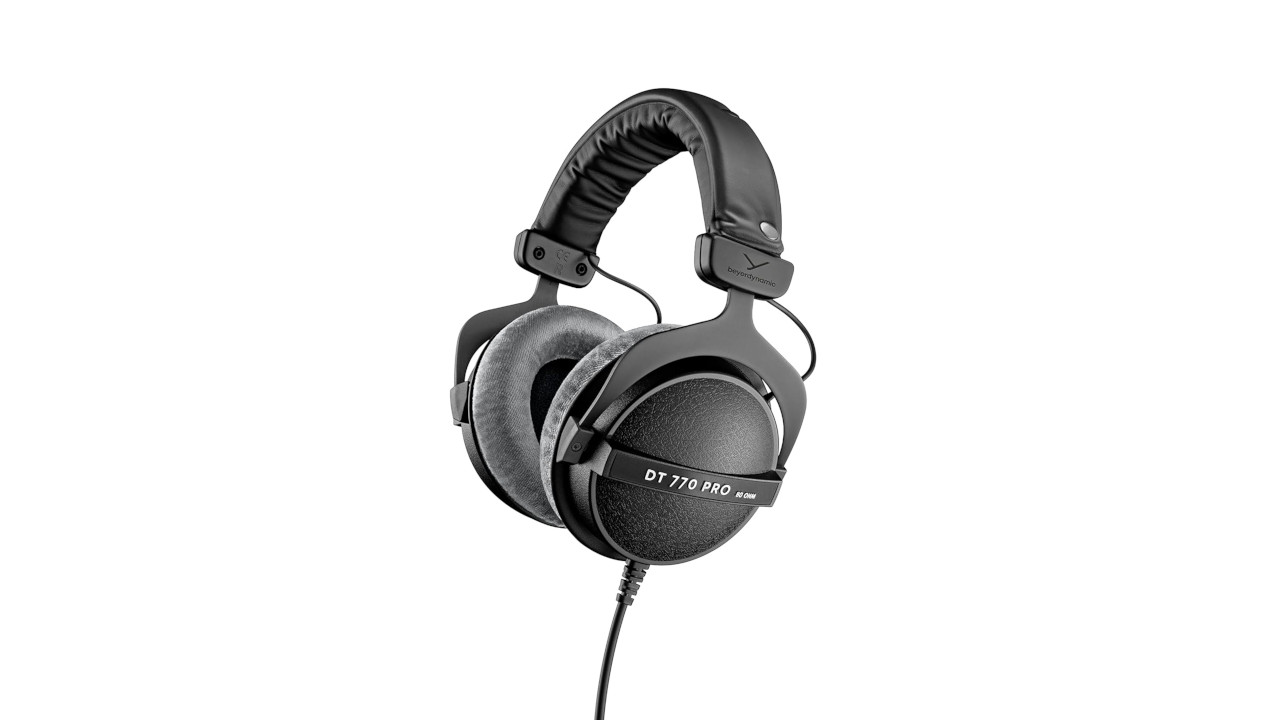
5. Beyerdynamic DT 770 PRO
Our expert review:
Specifications
Reasons to buy
Reasons to avoid
✅ Buy if you want a satisfying soundstage: The Beyerdynamic DT 770 PRO toes the line between functional transparency and hi-fi heart, with a relatively flat frequency curve that gives some welcome love to low end.
❌ Avoid if you want Bluetooth control: These are wired headphones through and through, so if you’re not a fan of cable-wrangling while running errands, you’ll have to look for some active Bluetooth headphones instead.
Audio rating: ★★★★
Comfort rating: ★★★
Battery rating: N/A
Overall: ★★★½
Studio monitor headphones are designed to be a neutral listen, with the flattest possible frequency curve to render studio works-in-progress as naked and exposed as they can be. For this reason, they’re not often recommended as casual-listening devices – but when it comes to listening loud, and wringing every drop of delicious noise from a big, heavy record, sometimes they’re just the ticket.
Beyerdynamic’s DT 770 PRO headphones are world-renowned studio monitor headphones – extremely versatile, extremely rugged and extremely well-priced to boot. These oversized closed-back headphones boast 45mm drivers, ensuring your well-insulated ears receive every decibel.
The DT 770 PRO is responsive from 5Hz to 35kHz, and is super fun with the way it handles itself from bottom- to top-end. There’s a neat little bump below 100Hz that gives sub-bass and kick-drum hoof some meaningful presence; a little lift at 10kHz ensures that cymbals and solos deliver, too.
Beyerdynamic sell a few different variants of these headphones, with different impedances for different use cases – there’s a 35-ohm version for if you’re exclusively listening on smartphones, but here, I’m bigging up the 80-ohm version as a great balance between great volume and great soundstaging.
Being this big, the DT 770 PROs can get a little cumbersome to wear over time; you might also find that high end a little fatiguing if you’re listening extensively. But hey, if you’re listening loud, you shouldn’t be listening long, right?
Best budget

6. Lindy NC-60
Our expert review:
Specifications
Reasons to buy
Reasons to avoid
✅ Buy if you want value for money: The Lindy NC-60's audio is above average - and they have active noise cancellation just for extra fun.
❌ Avoid if you want wireless listening: You won't find Bluetooth here and you'll need a device with a 3.5mm jack to use them.
Audio rating: ★★★
Comfort rating: ★★★
Battery rating: N/A
Overall: ★★★
There are caveats attached to Lindy’s NC-60 but they’re still well worth considering if you’re on a budget - especially when you realise they have active noise cancelling which, given the low price, is amazing.
First off, the NC-60 aren’t Bluetooth enabled, so wireless streaming is out of the question, and second, these headphones require your phone or tablet to have a 3.5mm audio jack - not a given these days.
But, while noise cancellation can’t compare to some of the other more expensive headphones in this list, audio delivery is really rather good. That’s down to the Lindy NC-60 ’s 40mm drivers which offer above average detail and they’re capable of excellent stereophonic imaging.
They also have a comfortable cushioned/adjustable headband which does the job nicely when listening to your favourite prog albums - and while they don’t fold down, the ear cups can be rotated to make storage a little easier.
These wired headphones also have a two-year warranty so if you want a pair of jobbing headphones that will do justice to raucous rock'n'roll when you’re on the bus to work, the Lindy NC-60 are well worth an audition.
FAQ

What’s the difference between volume and loudness?
The words ‘volume’ and ‘loudness’ are often used interchangeably when talking about consumer audio stuff, and even I've done it a fair few times in this very round-up. ‘Loud’ is a handy (and visceral) synonym for ‘high-volume’, after all! There is, however, a technical difference between the two terms – a difference which may help you understand some of the key ways in which certain headphones can be louder than others, without just being two megaphones strapped around your delicate bonce.
Volume is an objective term, describing the level of power behind a produced sound’s pressure waves; loudness, meanwhile, is a subjective term, which concerns our perception of sound as it’s translated by the brain. The volume of a sound can be measured by scientific instruments, but we can’t measure how loud we perceive a sound to be!
The loudness of a sound is a result of a few different variables. The presence of certain frequencies over others, for one, can contribute to how loud something feels – think Queens Of The Stone Age’s Songs For The Deaf, which manages to sound massive, deep and gutsy even at relatively considerate volumes. Dynamic range is another big part of loudness, where the contrast between quiet moments and massive drops can make something feel all the heftier (here’s looking at you, Mogwai).
Given loudness is perception-based, it’s also impacted by our own physiological or neurological biases; someone with hearing damage caused by long-term exposure to high volume will experience degraded perception of higher audio frequencies, and hence will be less inclined to find high-pitched sounds ‘loud’ against other listeners.
To see the principles of loudness in action, you need only look to the changes in recorded music over the last 50 years. The ‘loudness wars’ are a fantastic example of mixing and mastering engineers working to the limits of the various formats you hear music on – from vinyl pressings to radio waves.
On average, mixes today sound far louder than they did 40 years ago, despite the headroom not ever really changing for how high-volume a mix can be. This is testament to a few things, and a far larger topic than this FAQ on the loudest headphones could ever hope to meaningfully engage; suffice to say, though, that loudness speaks to more than measurements.
What makes the loudest headphones loud?
What does this mean for this round-up of the loudest headphones, then? Well, it means there’s more to the designation than the measurable volume of a pair of ‘phones at max. There are a number of factors that affect how loud a pair of headphones feel.
Of course, volume is still a major constituent element to loudness, and there are a few variables that impact the volume a set of headphones is capable of. The size of the drivers in each ear cup, for example, directly relates to the quantity of sound being aimed at the ear. Whether or not the headphones are open-back or closed-back, too, can affect volume – with closed-back headphones more likely to redirect sound back towards your ears.
The impedance of your headphones is a massive component of its volume capabilities, too – and arguably the most direct way you can experience different levels of loudness between headphones. To grossly simplify a grossly complex electrical-engineering concept, impedance describes how much resistance a given audio device’s headphone output can expect to experience; the higher the impedance, the harder that device has to work to get the signal through.
Low-impedance headphones are typically designed to match up with the expectations of common consumer devices’ headphone outputs – think smartphones, media players and boomboxes – and, given there’s little impedance to the incoming signal, are often much louder at lower volumes.
High-impedance headphones are often designed for higher-end and professional audio equipment, and are (generally speaking) quieter at low volumes as a result of the fight they put up against incoming signals. However, they often offer far better sound-staging than their low-impedance counterparts, which can contribute to how you perceive the loudness of your listening experience in other ways.
Speaking of loudness, frequency response is another major factor in the perceived loudness of a given pair of headphones. Budget, Beats-adjacent headphone brands will artificially pump up the bass frequencies to give their headphones’ sound some additional weight, often at the expense of the wider listening experience; further up the scale, headphone manufacturers are far more judicious in the way they handle frequencies.
How do I choose the best loudest headphones?
If you want to really experience the visceral vibes of your favourite bands, I recommend shopping for headphones that feature large dynamic drivers. 40mm should be the goal when you’re shopping for the loudest headphones, but look around and you’ll find some options with 50mm transducers, making them all the better for volume and clarity.
Well-fitting ear cups are also key to performance. They help isolate your tunes from background hubbub (noise cancelling technology is an additional aid here), which in turn makes for a more immediate and immersive listening experience. This works best with closed-back headphones, which prevent sound from leaving via the proverbial gift shop and ensure you get the full whack of your drivers.
If you’re after hi-fi-quality headphones for use in the home, though, consider a pair with an open back design. These tend to create a more realistic soundstage, like standing next to a pair of physical speakers. But be warned: open-back headphones leak sound so those around you will have a pretty good idea of what you’re listening to if you have the volume cranked.
Of course, larger drivers are not just concerned with volume. The other benefit is a more accurate sonic presentation. Instruments are more clearly defined, band members spatially delineated; in a nutshell, they offer a better sense of presence and reproduce the music as the artist intended. Several of the loudest headphones in this guide have recording studio DNA, bringing you even closer to that authentic studio experience.
How loud is too loud?
Loudness is a thrilling thing, but not without its risks – and it is incumbent on us to ensure you’re aware of those risks! High-volume listening is actively dangerous to the health of your hearing, whether over a prolonged period of time or in short, loud bursts. Excessive volume will cause hearing damage, in the form of tinnitus, hearing degradation or even loss of hearing altogether – and then how will you get your riffy kicks? So please rock responsibly – and maybe let your headphones’ loudness speak from behind a slightly lower volume.
Want to know more? Check out the advice this tinnitus expert gave us, find out what it's like living with tinnitus and read about the rising issue of hearing loss among musicians.
And if you're a regular gig-goer, consider investing in a good set of earplugs.
How we test
At Louder, we don't put our headphones through their paces in a studio or sound-proof room - instead, we test them from the comfort of our own homes or when we're on the way to work, out for a run, or during a gym session. We believe this gives you a more accurate take on what each set of the loudest headphones will deliver when you get your hands on them.
In this particular guide to the loudest headphones, we cranked up the volume to see how the headphones coped. Was there any distortion at higher levels? Did the audio start to crackle and break? And did the headphones still perform while all the way up at 11?
The music we choose covers many genres including rock, metal, prog, jazz, hip-hop, punk, goth and alternative so we can get a proper feel for what the headphones can and cannot do. If one of the loudest headphones in this guide has an accompanying app, we also utilise this to tinker with EQ settings and update firmware when required.
Of course, we also love comparing various sets of headphones while listening to our favourite albums - and this always throws up wide-eyed surprises. It's not unusual for us to hear audio details that have somehow passed us by despite owning a certain album 30 years or more and thinking we know it inside out. We check to see if the audio detail even at loud levels stands up.
To cap off how we test the loudest headphones, we also delve into the hardware to let you know about the tech they're pushing, how comfortable they are, and, in terms of Bluetooth headsets, how much battery life you'll get from a single charge - even when cranked all the way up.
Why you can trust us
Louder’s reviewers are a collective of passionate music fans, musicians and professional product testers, who between them have racked up years of product testing and written thousands of words on music listening gear across hundreds of reviews on Louder and for other publications.
As lifelong music fans, we're serious about the tech we listen to our favourite artists on. We want them to sound amazing, giving us all the detail those bands intended us to hear, and deliver the perfect balance of bass, mids and highs. We're looking for pure immersion in our chosen sounds, whether it's a classic rock album, a cutting-edge noise band, a heavy hitting metal outfit or synth-based unit.
And we tested the Marshall headphones in this guide on albums we know inside and out, and that we've listened to on a variety of systems already, so we know exactly what we should be hearing and when we're being short-changed by lacklustre audio.
We take into account every aspect, covering audio quality, comfort, Bluetooth capability, battery life and value for money.
We test products in a variety of settings too, from distraction-free intentional listening at home where we can really focus on the music, to our daily commute to the office and out and about on journeys to the gym, pub, shops etc. These scenarios are real-world and mean we can experience products exactly as you would and report our findings honestly.
Meet the experts
Why you can trust us

Steve is a home entertainment technology specialist who contributes to a variety of UK websites and mags, including Louder Sound, Yahoo UK, Trusted Reviews, T3, The Luxe Review and Home Cinema Choice. Steve began his career as a music journo, writing for legendary rock weekly Sounds, under the nom de plume Steve Keaton. His coverage of post punk music was cited in the 2015 British Library exhibition Terror and Wonder: The Gothic Imagination, as a seminal influence on the Goth music scene.
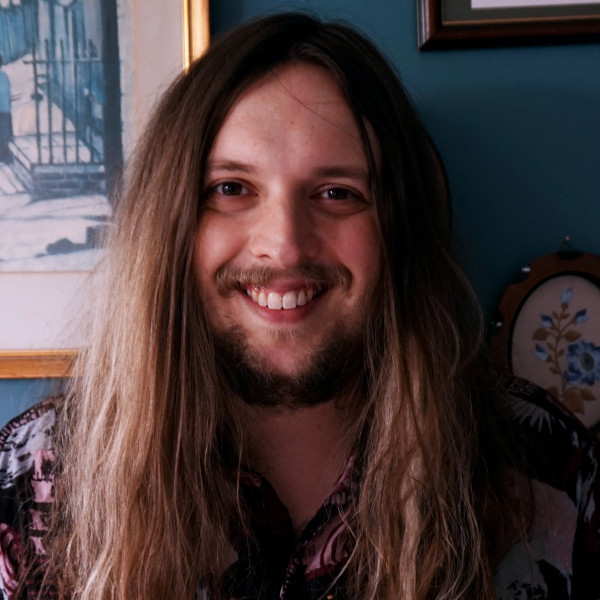
James Grimshaw is a freelance writer and music obsessive with over a decade in music and audio writing. They’ve lent their audio-tech opinions (amongst others) to the likes of Guitar World, MusicRadar and the London Evening Standard – before which, they covered everything music and Leeds through their section-editorship of national e-magazine The State Of The Arts. When they aren’t blasting esoteric noise-rock around the house, they’re playing out with esoteric noise-rock bands in DIY venues across the country; James will evangelise to you about Tera Melos until the sun comes up.
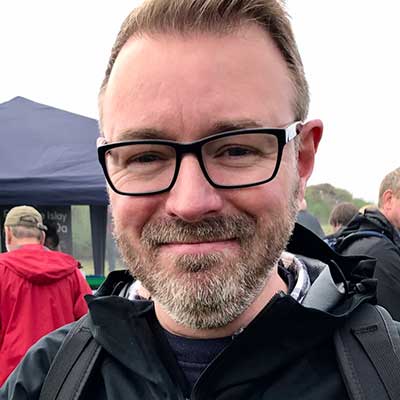
Scott has spent 35 years in newspapers, magazines and online as an editor, production editor, sub-editor, designer, writer and reviewer. Scott maintains Louder’s buyer’s guides, writes about the best deals for music fans, keeps on top of the latest tech releases and reviews headphones, speakers, earplugs and more for Louder. Over the last 11 years, Scott has written more than 11,000 articles across Louder, Classic Rock, Metal Hammer and Prog.
Latest updates
You can trust Louder
07/04/25: The page has been updated to include verdict boxes where applicable and new star ratings have also been added to all the loudest headphones in the guide. A new section detailing why you can trust Louder has now been added, as has a "meet our experts" section so you discover the faces behind the names.
Read more
- Plug your lugs with the best earplugs for concerts
- The best budget wireless headphones
- Best headphones for music: supercharge your listening
- The best headphone amps: Boost the mood
- The best kid's headphones: Headphones that are great for children
The latest news, features and interviews direct to your inbox, from the global home of alternative music.
Steve is a home entertainment technology specialist who contributes to a variety of UK websites and mags, including Louder Sound, Yahoo UK, Trusted Reviews, T3, The Luxe Review and Home Cinema Choice. Steve began his career as a music journo, writing for legendary rock weekly Sounds, under the nom de plume Steve Keaton. His coverage of post punk music was cited in the 2015 British Library exhibition Terror and Wonder: The Gothic Imagination, as a seminal influence on the Goth music scene.
- James GrimshawFreelance writer
- Scott MunroLouder e-commerce editor
